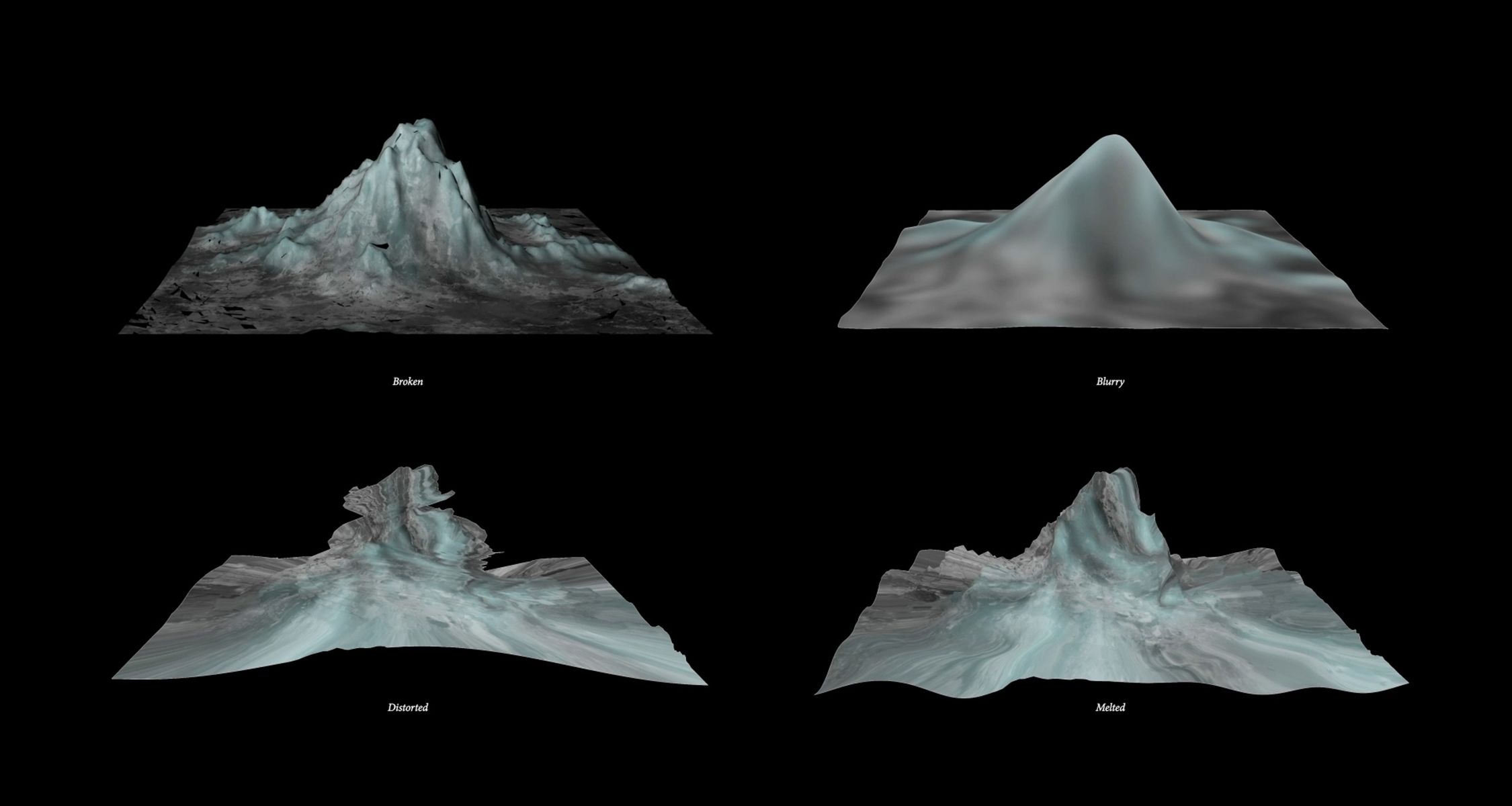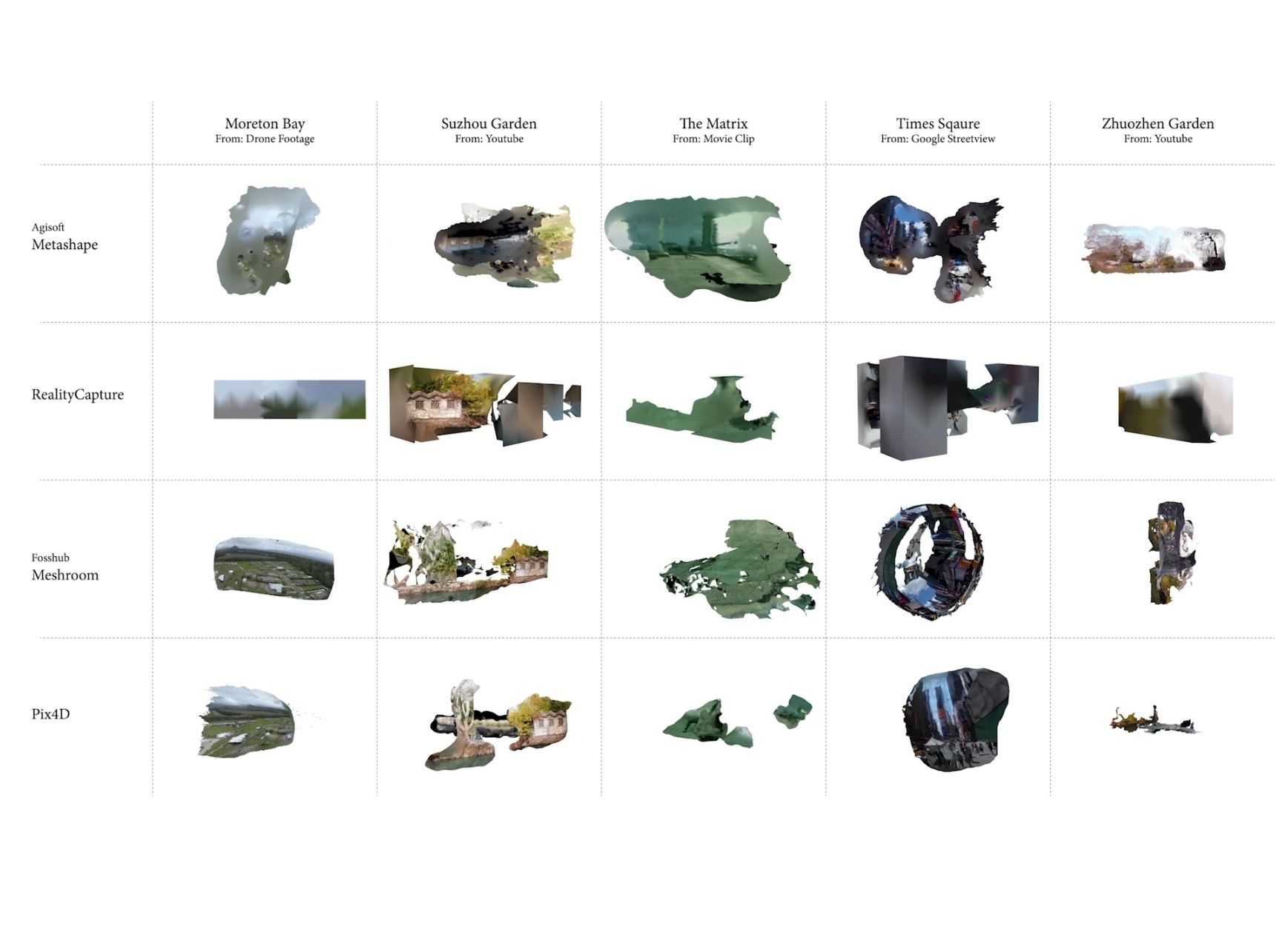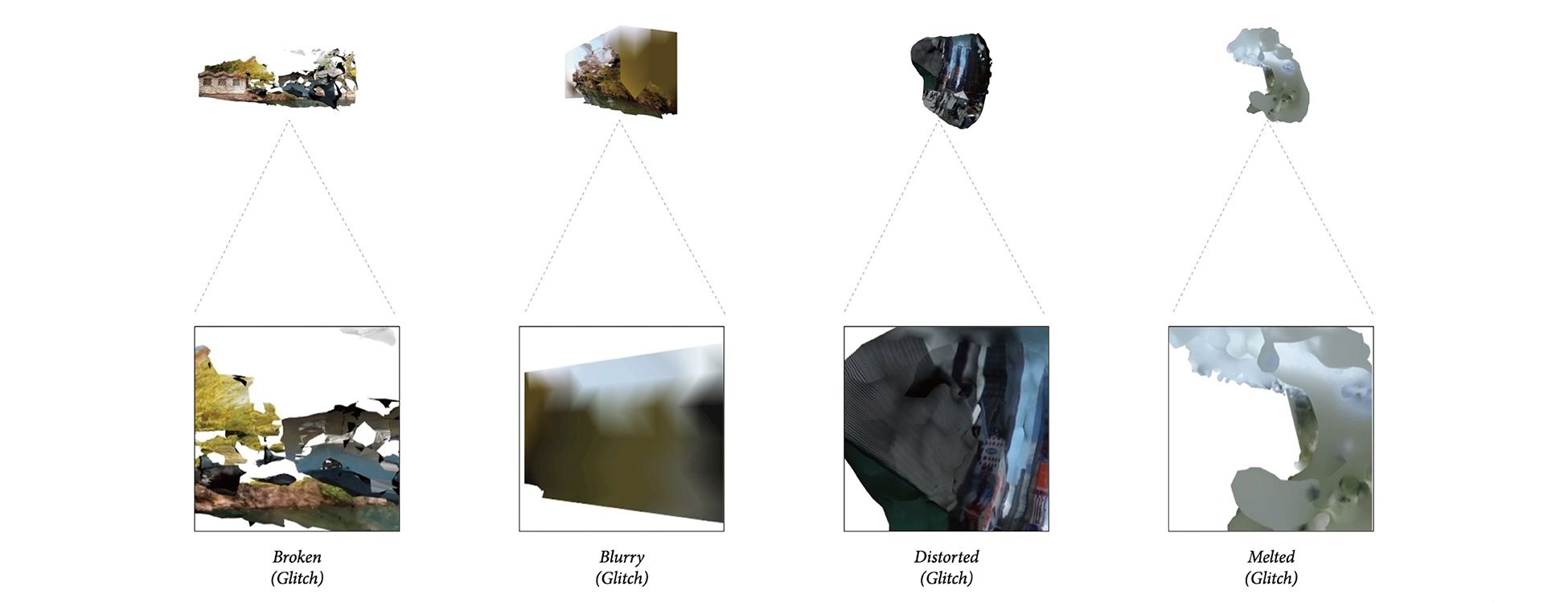Forms of Memories
Study on the Aesthetic of Photogrammetry

This project starts with exploring the aesthetic of photogrammetry as a software. Photogrammetry is predominantly being used as a representation tool to create realistic digital replications of objects and space from the real world. But instead of its ability to faithfully recreate the real world which is similar to more advanced technology like LiDar, we are more interested in the unexpected slippage and distorting result of photogrammetry due to its inaccuracy and dysfunctionality. The digital spaces constructed by photogrammetry often give us a surreal feeling. They are almost real, but slightly unfamiliar. It's a little bit dreamy, blurry, and disorienting. In our minds, photogrammetry is the software that functions closest to our memory: it presents the reality in the way most similar to how we perceive it. For this project, we attempt to recreate the aesthetic we discovered in photogrammetry through code and algorithmic processes. Rather than letting the software arbitrarily decide where the glitches are going to happen, we operate on photorealist digital scan and glitch it with an intention to produce the photogrammetry aesthetic and memory-like perception. Through this process the viewer is invited to this construction of new fictional memories, questioning photorealism and scientific objectivity of photography and 3D models.

